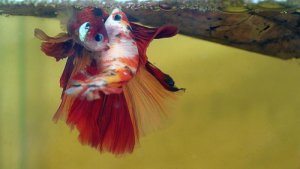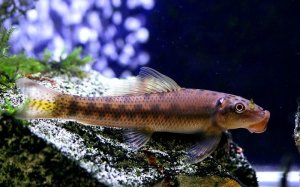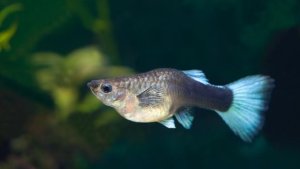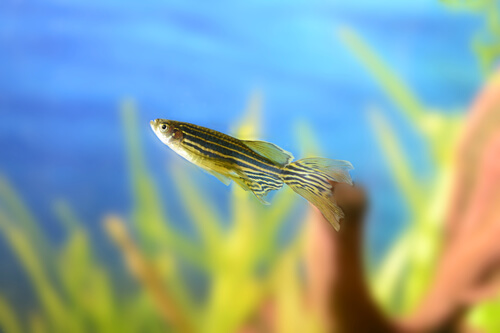
Walking into an aquarium shop, you may see tanks full of small shimmering fish, that you don’t know the name of. These kinds of small schooling fish are often sold as companions for larger fish like goldfish or betta fish.
However, these little fish are not a homogenous group! Instead, you will encounter minnows, Danios, platies, and more. This article looks at the Longfin Zebra Danio – a distinctive variety of the Zebra Danio with an unusual tail. Read on for 10 facts about the care of this popular schooling species.
Why Choose Long Fin Zebra Danio Fish?
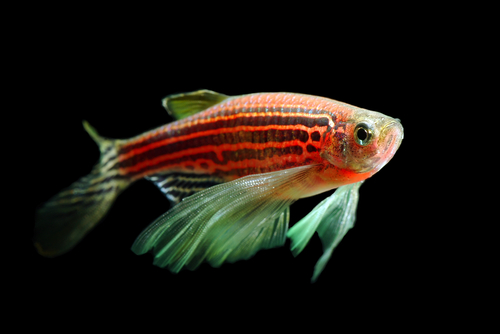
Why might you add Longfin Zebra Danio to your tank? These fish may not immediately seem as interesting as the larger goldfish or more colorful guppies. However, when searching for tankmates, they can’t be beaten. They get on well with many other fish, and they have a delightful and distinctive look.
If you want something more unusual than the classic Zebra Danio, the Longfin Zebra Danio has a long and tapering tail that can create a beautiful sense of movement when these fish swim in a school. In the same way, they make an excellent focal point for aquascaping tanks. They are minimalist and can create a sophisticated, naturalistic tank setup. On the other hand, they are easy to take care of for both kids and first-time fishkeepers.
10 Facts About Longfin Zebra Danio
1. They Are Captive Bred
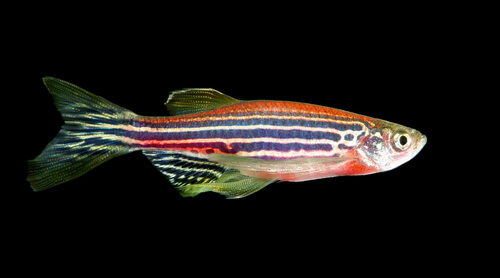
Unlike their short-finned relatives, Longfin Zebra Danio fish are captive-bred and don’t exist in the wild. Unlike some captive-bred fish, such as fancy goldfish and bettas, they are still very hardy. They can adapt to a wide variety of tank conditions, and they don’t show as much vulnerability to diseases and dirty tank water. You can also easily breed them at home and may even find they become pregnant.
However, this morph is still not found naturally, and this is because long-finned fish tend to have their tails nipped by shorter-finned members of the same species. Apart from this though, Longfin Zebra Danios thrive in many kinds of community tanks.
2. Longfin Zebra Danio Fish Are Fin Nipping Fish
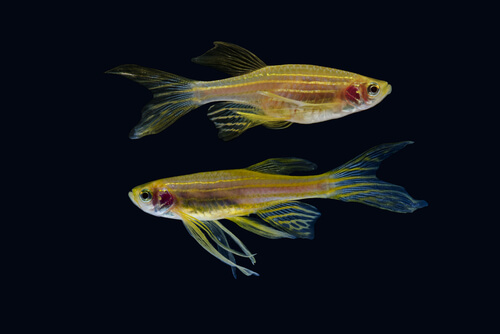
So, why exactly do Danio fish nip fins? This is generally a sign of aggression or competition over territory. As schooling fish, they like to stick together. However, they still have their own social dynamics. On top of this, the fin-nipping characteristic extends not just to their own species but to other tankmates.
This is why it’s important to take care of these tankmates have long, flowing fins. In a tank that is too small, they may nip the fins of bettas or fancy goldfish if you keep them together. In a big enough tank, fin-nipping won’t be an issue. Nevertheless, the best tankmates for these fish tend to have shorter fins.
3. They Are Completely Omnivorous
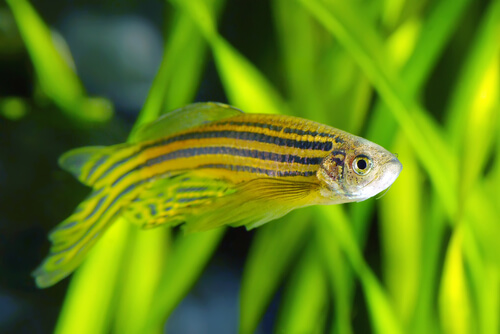
Just like their short-finned relatives, Longfin Zebra Danios are omnivorous. This means they do best eating a diet of both vegetables and protein. Many fishkeepers like to give their fish a complete flake or pellet food. It’s true that these foods provide the correct balance of nutrients for your fish. However, it doesn’t mean they are the only thing you should feed them.
Like other Danios, Longfin Zebra Danio enjoys an enriched diet that includes blanched vegetables like half a shelled pea to nibble on, as well as live or frozen protein. Live protein sources like glass worms and daphnia are something you can purchase in any good aquatics store. You will find it is a mesmerizing experience to watch your fish darting after invertebrates and feeding like they would in the wild!
4. Zebra Danios Prefer Still Water
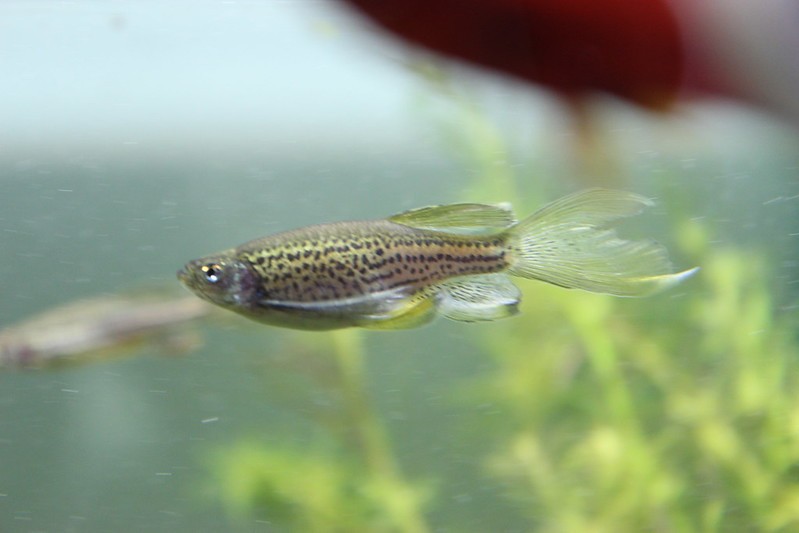
Where does the Longfin Zebra Danio come from? These little fish comes from slow-moving pools of water and river bends in places like India and Myanmar. One of their homelands is the Western Ghats, a mountainous region of western India that contains winding rivers. As a result, these fish don’t enjoy water that flows too quickly.
This characteristic makes them perfect tankmates for fish like fancy goldfish that also enjoy slow-moving or still water. Likewise, they do well with betta fish, which originally came from rice paddies. To provide the right conditions, choose a sponge filter for its gentle flow. Your flow rate should be no more than 4x the tank capacity – the same as for a fancy goldfish.
Author’s note: Despite their need for still water, it’s still important to provide Longfin Zebra Danio with proper tank maintenance. This means changing a third of the water once per week.
5. Longfin Zebra Danios Cannot Be Kept With Short Finned Danios
One unfortunate side effect of the Zebra Danio’s habit of fin nipping is that Longfin Danios cannot be kept in a mixed school or shoal with Shortfin Danios. You may love the idea of a community tank with some of each of these Danios. However, you will find that your short-finned Danios quickly begin to nip on the long tails of your Longfinned Danios
This is because your short-finned fish actually see your long-finned Danios as a threat. Because they are very similar yet have this crucial difference, long-finned Danios are seen as a source of competition.
6. Danio Fish Are Excellent Dither Fish
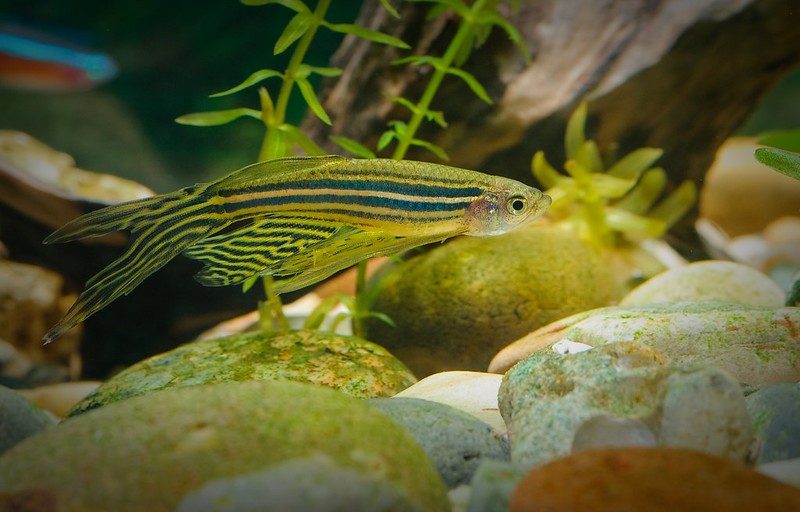
What are dither fish? In community tanks, you will find that some species of fish are bolder than others. For example, Longfin Zebra Danios are very bold and tend to come out to feed very easily. This is because they have a sense of protection from being in their shoal, meaning they are safe from predators.
However, some fish, like plecos, can be shyer. They don’t come out to feed as easily, for fear of predation. This is where dither fish come in. The presence of a group of Danios feeding in the open will signal to your other fish that the tank is a safe environment, and that they too can easily come out to eat.
Using dither fish is a great way of preventing issues with other fish, like betta fish, not eating. With their shimmering colors and long fins, Longfin Zebra Danios look great in a shoal, and their bold habits make them perfect dither fish to coax out shyer species.
7. It Is Extremely Easy to Breed Zebra Danio Longfin
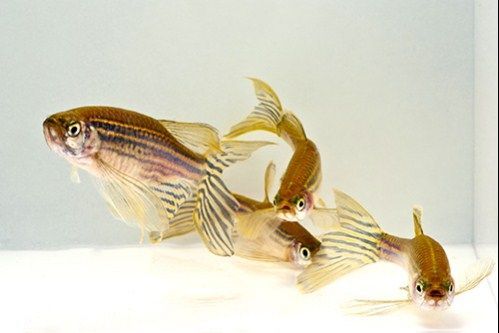
Have you ever kept Zebra Danio of any kind and found you ended up with eggs in your tank? This is because these fish are extremely fertile and very easy to breed – and the Longfin Zebra Danio is no exception.
In the wild, many of these small fish would serve as food for predators higher up in the food chain. Certainly, not all of their fry would make it to adulthood, often forming part of the diet of other, larger fish. As a result, Zebra Danio evolved to produce a lot of offspring.
If you want to take advantage of this, you can simply transfer some of your Longfin Zebra Danio to a large enough breeding tank and wait for nature to take its course. After this, you can move the parent fish back to their tank, and wait for the eggs to hatch.
As the Longfin variety is not as common, you can even go on to sell these fish. The species is also a great place to get started with breeding, as it is so easy to work with.
8. They Are Shoaling Fish
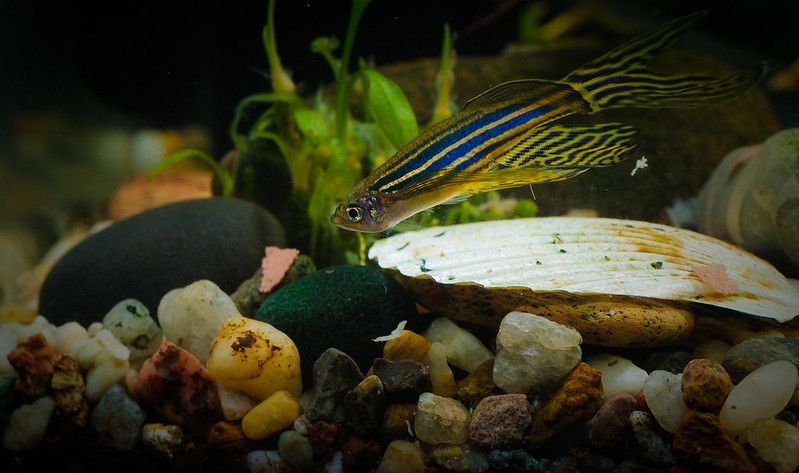
What is shoaling? This common fish behavior is a way of protecting individual fish from predators. Fish that shoal have the advantage of safety in numbers. In fact, the movement and coloring of many shoaling fish – including the Longfin Zebra Danio – confuse predators.
Meanwhile, schooling is the process where many fish swim in the same direction. Longfin Zebra Danio fish are highly social and are both shoaling and schooling fish. This makes them a great fish to keep in aquascaping tanks, for their elegant motion and colors. However, many fishkeepers have found keeping Zebra Danio in groups of more than about 12 can make them hyperactive.
9. Longfin Zebra Danio Fish Come In Multiple Colors
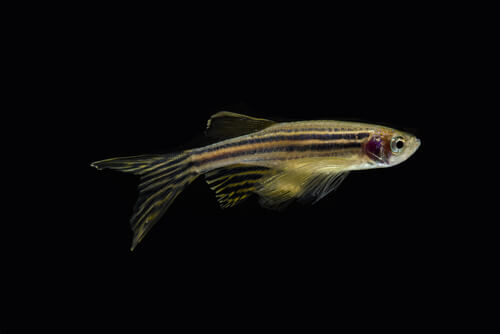
You may have decided that the Longfin Zebra Danio makes a perfect tankmate for your community aquarium. However, did you know these delightful fish come in multiple colors?
Not only can you find them in the classic silver and blue stripes, but you can also find Longfin gold Zebra Danios, which tend to be a pale lemon yellow color with gold stripes and add a mysterious glimmer to your tank.
10. Longfin Zebra Danios Do Not Fully Sleep
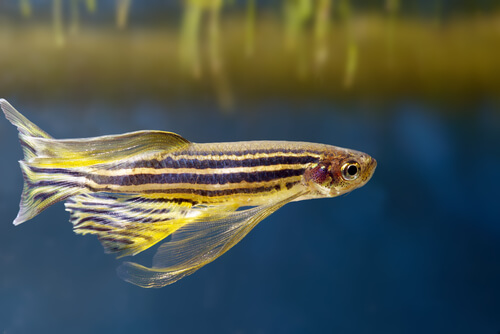
Many first-time fishkeepers wonder if their fish sleep. It is very common to see goldfish resting on the bottom of their tank and many people eventually realize that these fish are getting some well-needed shut-eye. But what about Longfin Zebra Danio? Danios are a prey species and are very alert, so you will find they respond to even the slightest stimuli.
Many owners discover their fish resting midwater, only to startle them by moving nearby or turning the tank light on. This leads them to believe these fish do not sleep. In fact, it is better to describe the Longfin Zebra Danio sleep pattern as rest. In general, it depends on the presence of lighting.
Final Thoughts
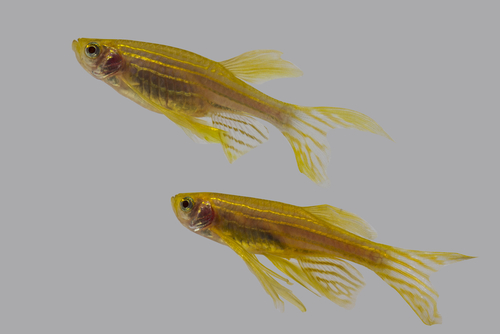
It is common to find tanks where Danios, minnows, and other small schooling fish become overshadowed by larger tankmates. Often, in goldfish tanks and betta tanks, these little fish don’t get the attention they deserve. This guide shines a spotlight on the fascinating behaviors of these fish – as by understanding them more, you can help them live happy, healthy lives.


